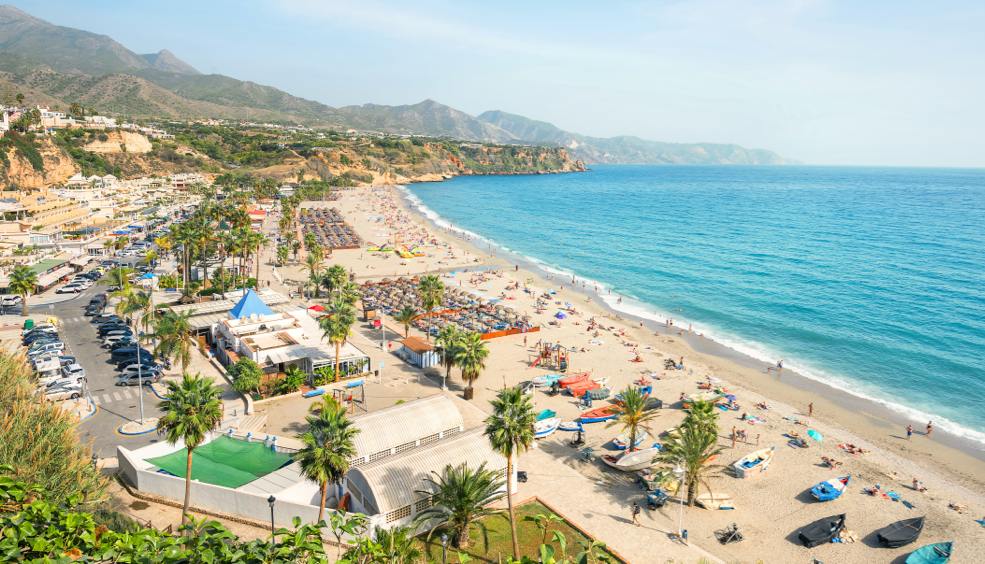New routes from London to Spain with Vueling
Gatwick Airport now has direct flights to Malaga (Costa del Sol, Andalusia), Seville (Andalusia), Granada (Andalusia), Almería (Andalusia), Cádiz (Jerez, Andalusia), Menorca (Balearic Islands), Oviedo (Asturias) and A Coruña (Galicia).
more infoAndalusia: a thousand plans and sunshine all year round
Discover Andalusia: an unforgettable journey through its 8 provinces, where history, gastronomy, nature and beaches combine to offer unique experiences.
more infoFive destinations to ski and do some sightseeing as well
Escape for a few days to the best ski resorts in Europe and discover some new places while you're there. There's time for everything!
more infoWine and Classical Music
Not for nothing is the small town of Saint-Émilion a veritable magnet for wine lovers. The surrounding farmland is blessed as one of the leading red wine producing areas in Bordeaux, along with the Médoc, Graves and Pomerol. Celebrated worldwide, each year it attracts wine connoisseurs, tourists and passers-by who roam from one chateau to the next in search of the best local wine. But, that is not the only reason they come here. They are also drawn by the magic enveloping this town of steep, narrow streets, Romanesque churches and picturesque ruins which, alongside the vineyards, make up an irresistibly charming ensemble. No wonder, then, that Saint-Émilion and its environs are listed as World Heritage by UNESCO.
Saint-Émilion is named after the monk Émilion, who settled here in the 8th century and was credited with performing a number of miracles. The monks that were gradually drawn to the area were instrumental in getting the wine-marketing business off the ground, based on the vineyards which have been tended in Saint-Émilion since Roman times.
A must-visit destination for wine connoisseurs, the town features numerous landmarks well worth visiting. Its Monolithic Church is one of these. Carved out of a cliff from the 12th to the 15th century, its interior is surprisingly spacious and the complex is crowned with a lofty tower. Other highlights of Saint-Émilion include the Collegiate complex and the Cordeliers Cloister.
And, needless to say, there are always the chateaux, which can be visited as part of tours offered by the Saint-Émilion Tourist Office. But, why not strike out on a different kind of visit. Here’s how…
Les Grandes Heures de Saint-Émilion
When planning your visit to Saint-Émilion, we suggest you factor in one of the leading local festivals, Les Grandes Heures de Saint-Émilion. What makes this festival so special is that it is the only way to visit some of the region’s magnificent chateaux where this splendid, popular wine is made, in a unique, out-of-the-ordinary setting. The programme features classical music concerts accompanied by wine tasting sessions, endowing a visit to the wine cellar with a wholly different dimension. The festival opens in March and runs until December, when the last concert is held. This year, the first concert is scheduled to take place in the Château Fombrauge on 29 March.
The sites where you can enjoy this experience include the Château Soutard, Château de Pressac, Château Angélus, Château Cantenac, Château Fombrauge and Château Cheval Blanc, known for being one of the few producers whose wine is designated Premier grand cru classé A.But the programme is not limited to the wine cellars dotting the area; some of the concerts are also held at such emblematic sites as the Monolithic Church of Saint-Émilion. Be sure to book your ticket in advance.
Book your Vueling to Bordeaux, which lies just 40 kilometres from Saint-Émilion, and get to know one of France’s leading wine-producing areas.
Text by Los Viajes de ISABELYLUIS
Image by Tim Snell
more info





